

Patrocinio del
Comune di Roma
Dipartimento XIV
Comune di Roma
Dipartimento XIV
Milady Tărtăria and the riddle of dating
Tărtăria tablets
by Marco Merlini
Tărtăria-Gura Luncii is a very important Neolithic site with the cultural strata approximately three meters thick, reaching a depth of four meters in some places. Four layers have been uncovered. The deepest one belongs to the Starčevo-Cris culture. The third to a Vinča B occupation. The second to the Turdaş-Petresti culture. The first to the Cotofeni culture related to the Baden and other cultures, probably Indo-European which replaced the Neolithic and Eneolithic throughout Southeastern Europe. [28] 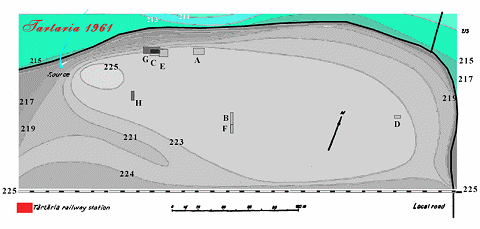
Tărtăria tablets are not completely reliably dated archaeological artefacts from three points of view:
Regarding the radiocarbon dating of the tablets, most of the scholars were very cautious and never mentioned a direct C14 analysis of them. For example, Marija Gimbutas stated in The Goddesses and Gods of Old Europe that "By analogy (italics are mine) with calibrated radiocarbon dates for early Vinča layers at other sites (italics are mine), the date of the lowest occupation level cannot be later than the early fifth millennium". [29] Other researchers [30] were less prudent in claiming the results of a direct radioactive carbon dating of the tablets. Some novelists were even less cautious, and on the basis of the supposed C14 analysis they claimed that the tablets mention the gods Enki and Ur but at least 1,000 years earlier then the corresponding Sumerian cuneiform texts. [31] The fact is that the tablets have never been analyzed by radiocarbon dating, and the legends abound. For example, one has to consider that even up to now the myth of a Russian analysis made in the early sixties still circulates. And what is more; according to various Romanian archaeologists the tablets can not be submitted to the C14 analysis any more explaining that Vlassa was not present at the time of their discovery, which happened some hours before the final closing of the excavation. The tablets were soft and covered with limestone, due to the humidity in the pit. In order to harden them, a well-meaning and hasty restorer decided to bake them in the museum laboratory's electric oven. He only noticed later that the tablets were inscribed when he removed the calcic layer. Nobody knows at what temperature and how long they had been baked. The fact of the matter is that, after the heat treatment, the tablets of Tărtăria will never be able to pass the carbon 14 test: the thermic stress has compromised the clay's basic quality indispensable for carbon analysis. [32] Vlassa did not take any photos of the tablets before the oven-treatment and didn't mention the mishap neither in the preliminary excavation report nor in the subsequent articles. He also refused to discuss this situation with his close colleagues and friends. In his articles he noted only that the tablets were "poorly burnt". In fact the reddish colour characterizing them could have been due to the unfortunate burning in the museum. Other scholars consider that the tablets are unbaked, but I don't understand on which documentary basis. [33] This unfortunate accident has hurt not only Vlassa's reputation, but also those of the tablets and of the Danube Script. Some scholars sustain that the tablets were not discovered by the Cluj archaeologist at Tărtăria but in the basement of Cluj museum, in one of the boxes in his custody containing the Turdaş findings of baroness Zsˇfia von Torma. That of the oven my sounds a convincing story, but it has a maggot working away inside. The tablets can't be analyzed by C14 method, not because of the thermic stress, but because they are made mainly of sand. This composition of sandy clay is confirmed by an analysis made by the Mineralogy Department of the Faculty of Biology and Geology of Cluj University for the Prehistory Knowledge Project. The tablets do not contain any or too little carbon, therefore it is impossible to determine their isotopic chronology. 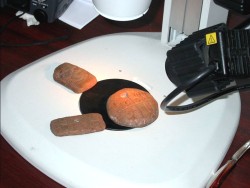 A
microscopic examination of the tablets made by the Mineralogy Department
of the Faculty of Biology and Geology of Cluj University discovered
that they have also been subjected to acid treatment at the Museum
just after their discovery which modified the original slip. Nowadays
the clay shows a chestnut-reddish colour and is crystallised to
the point of looking like tuff. A
microscopic examination of the tablets made by the Mineralogy Department
of the Faculty of Biology and Geology of Cluj University discovered
that they have also been subjected to acid treatment at the Museum
just after their discovery which modified the original slip. Nowadays
the clay shows a chestnut-reddish colour and is crystallised to
the point of looking like tuff. II. The unsure stratigraphy of the tablets inside the pit Concerning the unsure stratigraphy of the tablets inside the pit, the only information one can have is from the preliminary excavation report published in 1963 by Vlassa in the magazine Dacia. But unfortunately the archaeologist spent more consideration on the hypothesized Mesopotamian influences in Transylvania than on the description of the excavation and its findings. As Emilia Masson has already observed, the Vlassa publication doesn't include any reproduction in situ of the important pile of bones and artifacts or how they look like at the moment of their discovery at the bottom of the pit. 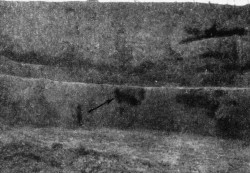 Neither
does it contain a report about the circumstances of the dig, nor
about the exact location of the findings. [34]
The only evidence one has is a dark photo in which an arrow points
"to the 'ritual pit', dug in the yellow loess, where the idols and
clay tablets were found". [35] Neither
does it contain a report about the circumstances of the dig, nor
about the exact location of the findings. [34]
The only evidence one has is a dark photo in which an arrow points
"to the 'ritual pit', dug in the yellow loess, where the idols and
clay tablets were found". [35]
III. The uncertain location of the pit inside the stratigraphy of the Vlassa dig If the stratigraphic position of the tablet within the pit is unsure, also is the stratigraphic position of the pit itself. It was found in the yellowish clay layer and this means a range of possibilities of its location from level 11 (after observations from Vlassa) to level 6: from Vinča B1/B2 pit-house layer to an Early Cooper Age Petresti culture Phase AB. This uncertainty is strange because, as it has been said before, Vlassa excavated the site of Tărtăria with the purpose of obtaining good stratigraphic information in order to better understand the finds from Turdaş. In conclusion, one can note that three weak points of Vlassa's framework (the rumours on the tablets radiocarbon dating, their unsure stratigraphy inside the pit and the uncertain stratigraphic location of the pit itself) have induced many scholars to be sceptical about the information communicated by the Cluj archaeologist regarding the layer where the pit was located, the position of the tablets inside it and even their belonging to the Tărtăria settlement. Some claimed that Vlassa perpetrated a forgery. [36] 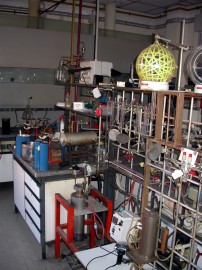 As already mentioned, the human remains which accompanied the tablets are still preserved in Cluj, in the basement of the National History Museum of Transylvania. The result of the C14 analysis made by the Laboratory of the Department "Scienze della Terra" of La Sapienza University for the Prehistory Knowledge Project is the following: Rome - 1631 (human bones): 6310 ▒ 65 yr BP (calibrated 5370-5140 BC). [37] The Prehistory Knowledge Project is also organizing the C14 analysis of other organic materials found in Tărtăria in order to resolve the quarrel over the stratigraphy of the finds and excavations. Going on with the C14 analysis, in August 2004 the Laboratory of the Department "Scienze della Terra" of La Sapienza University made a radiocarbon dating of some animal bones found at the deepest excavation layer (Tărtăria layer G-16 + G-17). The results are highly coherent with the dating of the human bones and reinforce the hypothesized connection between the burial and the foundation of the building: Rome -1655 (animal bones) 6210▒65 yr BP (cal 5280-5060 BC). 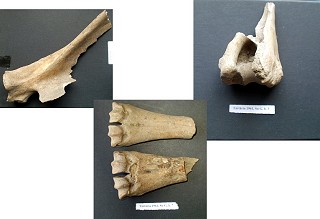
| |
merlini tartaria | 1 | 2 | 3 | 4 | 5 | 6 | 7 | 8 | 9 | 10 | 11 | 12 | 13 | 14 | 15 | |